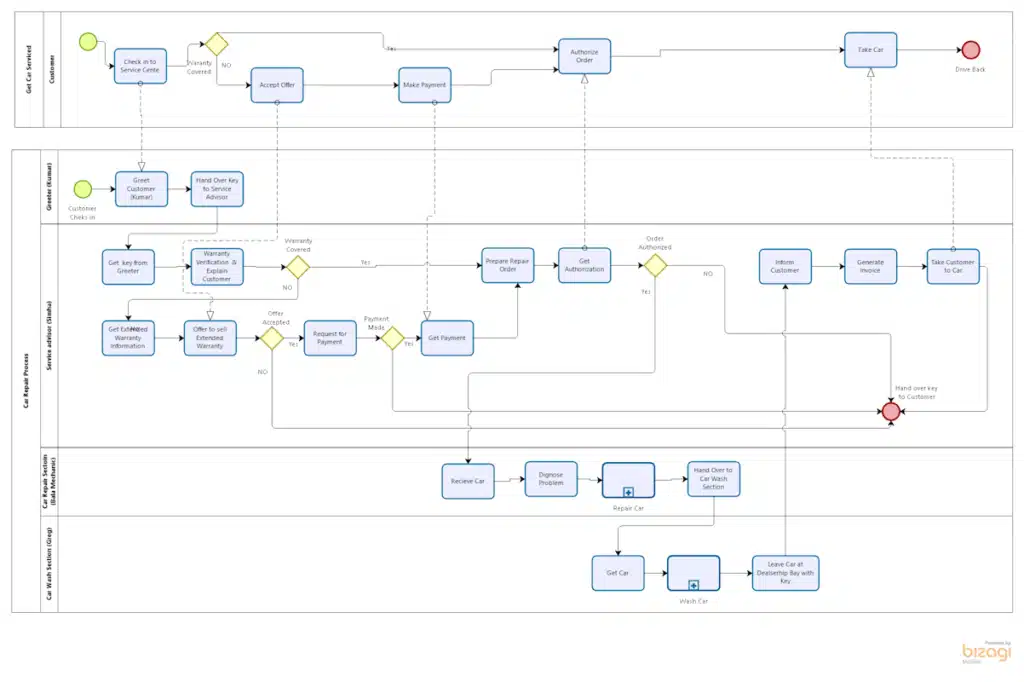In the fast-paced world of business, efficient processes are the backbone of success. Streamlining workflows, improving collaboration, and ensuring clarity in operations are essential for any organization. Enter BPMN 2.0, a powerful tool that has revolutionized the way businesses model and manage their processes. In this blog post, we will delve into the intricacies of BPMN 2.0, exploring its key features, benefits, and practical applications.
Understanding BPMN 2.0:
What is BPMN?
Business Process Model and Notation (BPMN) is a standardized graphical notation that provides businesses with the capability to understand their internal processes in a visual manner. It offers a common language for business analysts, stakeholders, and IT professionals to communicate and collaborate on process design and improvement.
The Evolution to BPMN 2.0:
BPMN 2.0, the second version of the standard, brought significant enhancements and improvements over its predecessor. Released by the Object Management Group (OMG), BPMN 2.0 introduced new elements, expanded capabilities, and improved the overall clarity and precision of process diagrams.
Key Features of BPMN 2.0:
1. Improved Flexibility:
BPMN 2.0 allows for greater flexibility in process modeling by introducing new elements such as data objects and expanded message flow capabilities. This enables organizations to represent a wider range of processes with increased accuracy.
2. Collaboration and Communication:
One of the primary goals of BPMN 2.0 is to facilitate better collaboration between business and IT stakeholders. The notation provides a clear and standardized way to represent processes, making it easier for all parties to understand and contribute to process improvement efforts.
3. Enhanced Event Handling:
BPMN 2.0 enhances event handling by introducing intermediate events, compensating events, and boundary events. These additions provide a more nuanced and precise representation of process events, allowing for better modeling of real-world scenarios.
BPMN Mapping using Software
BPMN 2.0 Cheatsheet Poster
Unlock the power of Business Process Model and Notation (BPMN) with our comprehensive cheatsheet poster. This visual guide is designed to assist business analysts, stakeholders, and IT professionals in mastering the essential concepts of BPMN 2.0.
Key Features:
- Symbol Reference: Quickly identify and understand BPMN symbols used for activities, events, gateways, and more. Our poster provides a visual roadmap to help you navigate the diverse elements of BPMN.
- Process Flow Modeling: Learn the basics of constructing process flows. Follow step-by-step examples to create clear and concise representations of your organization’s workflows.
- Event Handling: Explore the nuances of events in BPMN. From start events to end events, intermediate events, and boundary events, our cheatsheet ensures you can accurately depict and interpret the event-driven nature of your processes.
- Gateway Logic: Understand the various gateway types and their role in decision-making within a process. Use our cheatsheet to demystify exclusive and inclusive gateways, as well as complex conditions.
- Data Objects and Pools: Dive into the world of data objects and pools. Enhance your BPMN diagrams with a clear representation of data flow and organizational boundaries.
Practical Tips:
- Collaboration Insights: Leverage BPMN for effective collaboration between business and IT stakeholders. Use the cheatsheet to facilitate communication and ensure a common understanding of process models.
- Optimization Opportunities: Identify optimization opportunities within your processes. The poster offers guidance on recognizing bottlenecks and redundancies, setting the stage for process improvement initiatives.
Integration with BPM Software:
Discover how BPMN seamlessly integrates with BPM software for practical implementation. Translate your visual models into executable workflows with confidence.
Whether you’re a seasoned BPMN user or just starting, our cheatsheet poster is your go-to resource for mastering BPMN 2.0 and creating streamlined, efficient business processes.
BPMN 2.0 Diagram
This is one of the Examples of BPMN 2.0 Diagram that I made for one of my friends Business

Practical Applications:
1. Process Design and Documentation:
BPMN 2.0 is widely used for designing, documenting, and analyzing business processes. Organizations can create detailed process models that serve as a visual guide for understanding how activities, events, and decisions interact within a given workflow.
2. Process Improvement and Optimization:
By visually representing processes, organizations can identify bottlenecks, redundancies, and inefficiencies in their operations. BPMN 2.0 diagrams serve as a valuable starting point for process improvement initiatives, helping businesses streamline their workflows and enhance overall efficiency.
3. Integration with BPM Software:
Many Business Process Management (BPM) software solutions support BPMN 2.0, allowing organizations to seamlessly translate their process diagrams into executable workflows. This integration ensures that the theoretical models created using BPMN can be directly applied to automate and manage real-world processes.
Conclusion:
BPMN 2.0 stands as a pivotal tool for businesses seeking to improve their processes, enhance collaboration, and achieve operational excellence. Its standardized notation and comprehensive features make it a valuable asset for organizations of all sizes and industries. As businesses continue to evolve, BPMN 2.0 remains a cornerstone for effective business process modeling and optimization.
